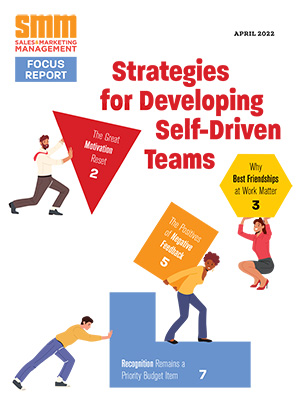Marketing VPs have long asked the puzzling but oh-so-important question: “What in the heck does sales want from us anyway?” The problem is the sales department sometimes doesn’t know what it wants — or it changes what it asks for on some seemingly random basis. One day it’s, “We need a lot more leads.” Another day it’s, “We need more qualified leads,” or, “We need more marketplace awareness.” Some days, they want all three.
Sometimes, what the sales VP asks you to do is not necessarily in his or her best interest, or that of the company. As a critical part of the value chain, the marketing chief must have an equal voice in defining the lead-to-revenue (L2R) process. This may cause a bit of friction in the design phase, but when the L2R machine is running smoothly, everyone will benefit.
Here are six ways a marketing team can add the most value to the sales department and its revenue mission:
1. Generate leads. This almost goes without saying, but a steady lead flow can hide other sins, and a lack of leads can make you look bad despite all of the other great stuff you are doing. If you support your half of the lead-to-revenue machine, you will receive plenty of respect and job security.
2. Be a branding ninja. Positioning a product, service or the company itself correctly is an essential part of driving revenue. Good branding helps the prospect quickly understand who you are, what you are offering and what benefits accrue from doing business with you.
3. Build awareness. Awareness provides vital air cover for the sales force. In B2B, just like B2C, people tend to buy from companies they know and trust. Assuming the awareness is positive, you can never do too much to get the word out to your target audience, as well as marketplace influencers like analysts, media, association leaders, etc.
4. Create great content. There is no such thing as too much content, assuming the content is relevant to the various buyer/influencer personas and tailored to different stages in the buying cycle. Sales reps love it when they have a handy piece of collateral to support a particular benefit or overcome a prospect objection.
5. Optimize your website. A great website is a sales accelerator. The ideal scenario occurs when prospects visit your site, educate and self-qualify themselves, and then engage with your sales team — reducing the sales cycle and improving close rates.
6. Demand reciprocity. Effective lead-to-revenue machines result from a tight partnership between marketing and sales functions, aligning processes, people and technology. Both departments have to execute their specific roles efficiently — based on the target metrics agreed to in the planning stages. Note that the marketing department must not be a junior partner in this process — both parties are equally accountable.
The essential thing to remember is that whatever marketing is perceived to be doing that helps generate revenue will be labeled an investment, and whatever it does that does not contribute to revenue will be labeled an expense. When it comes to budget, recognition and job security, it is always better to be thought of as an investment. Plan your deliverables accordingly. — CR
Download a free eBook on the lead-to-revenue machine at FusionMarketingPartners.com under the Resources tab.



